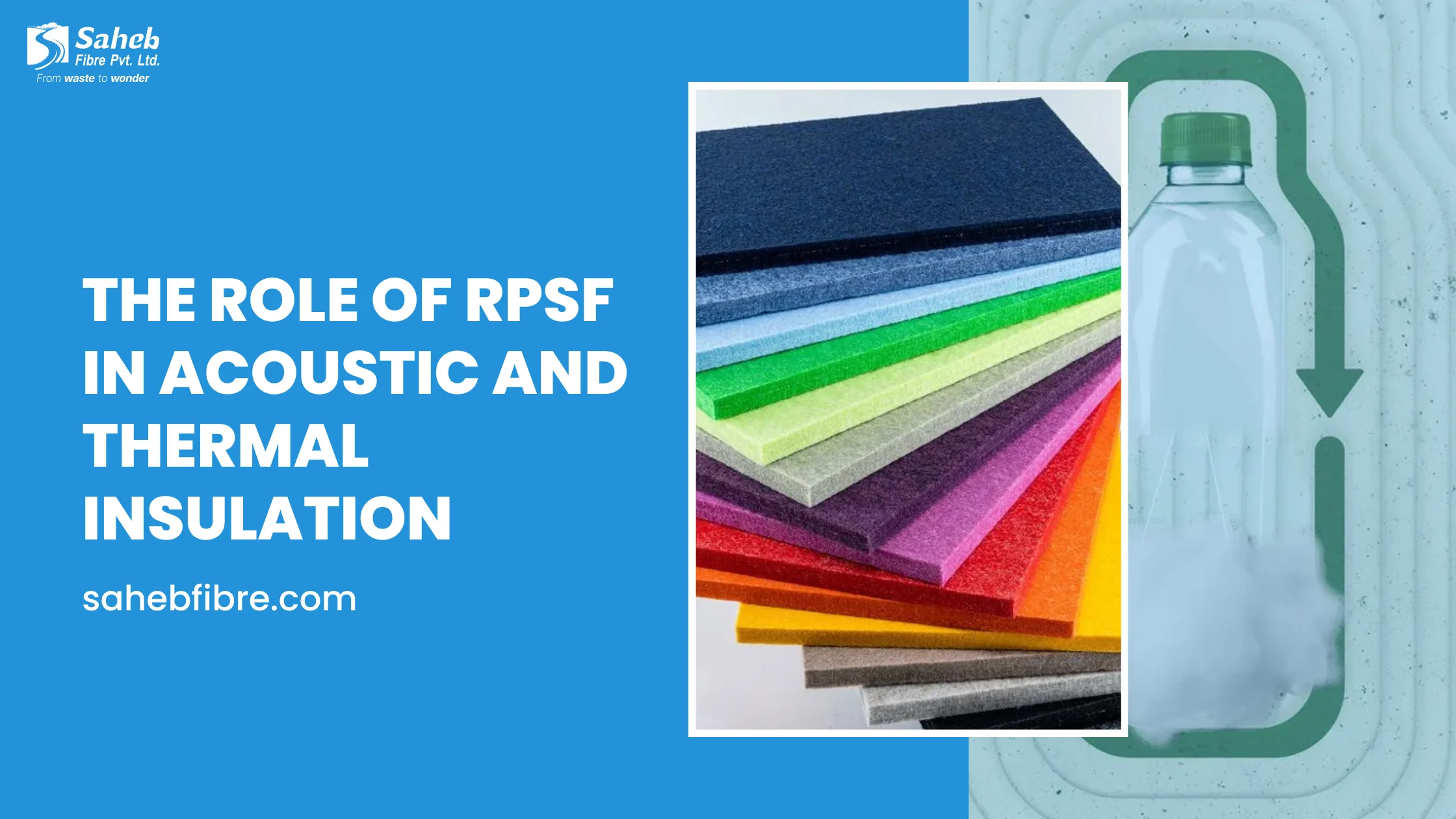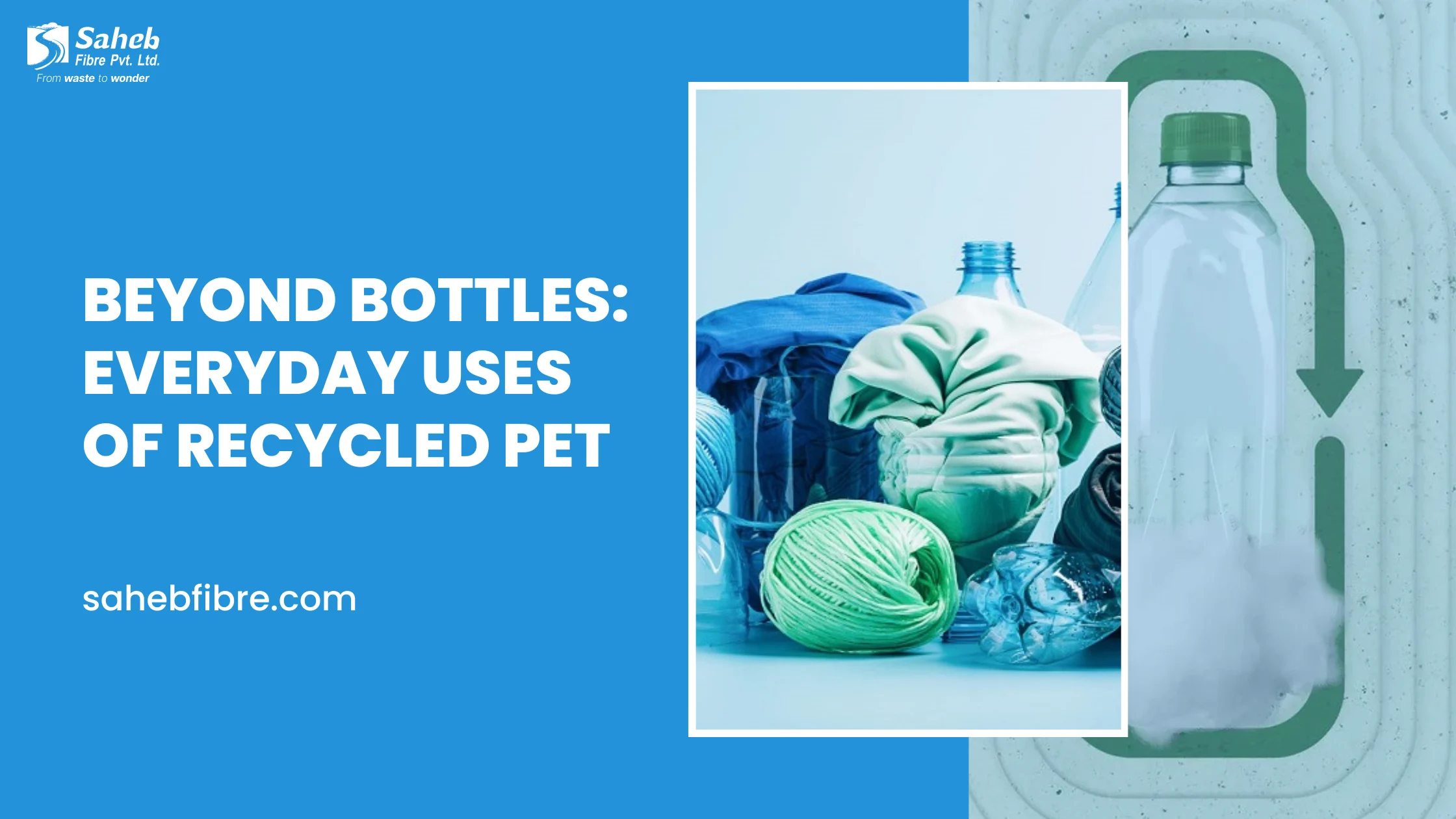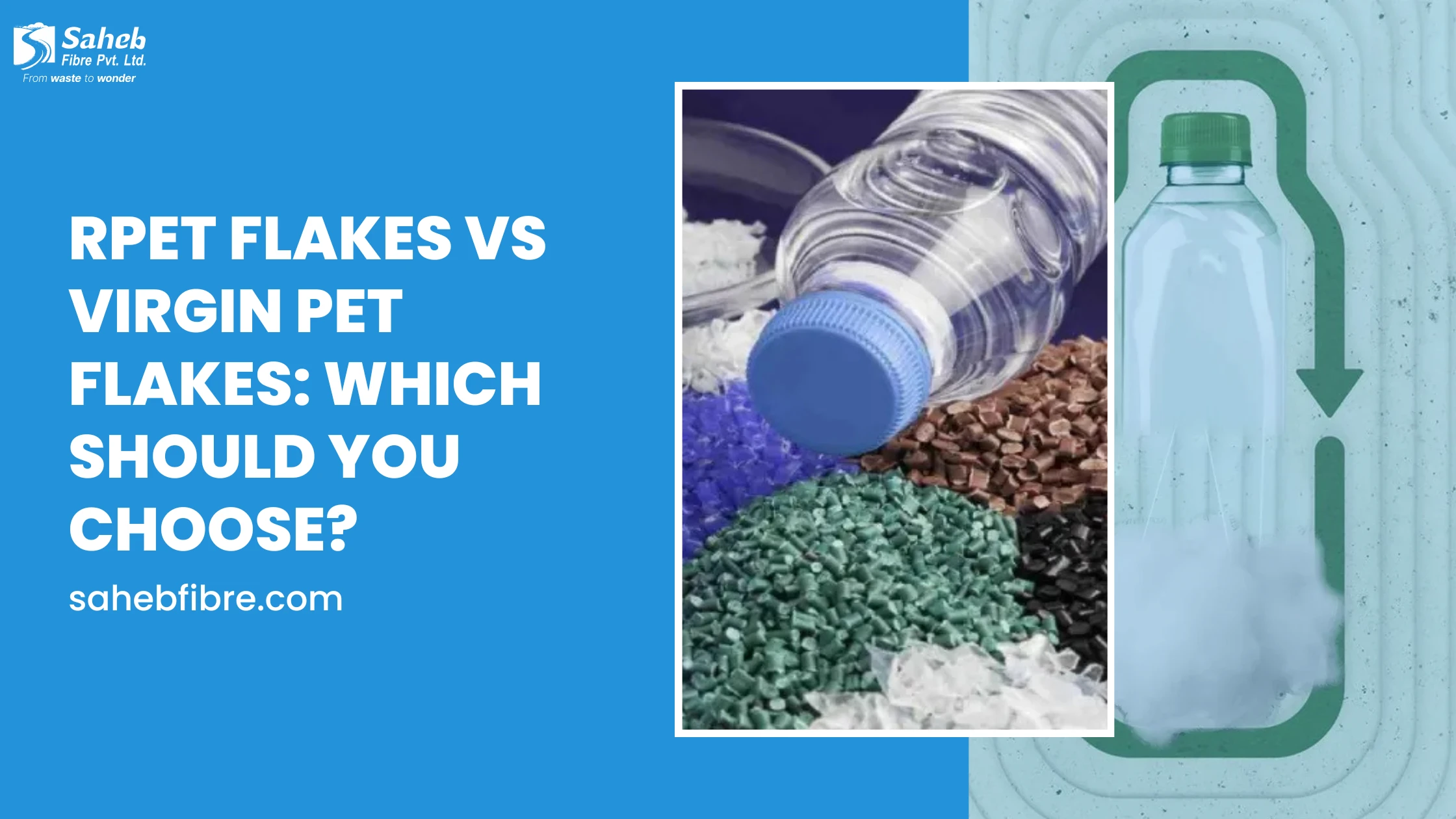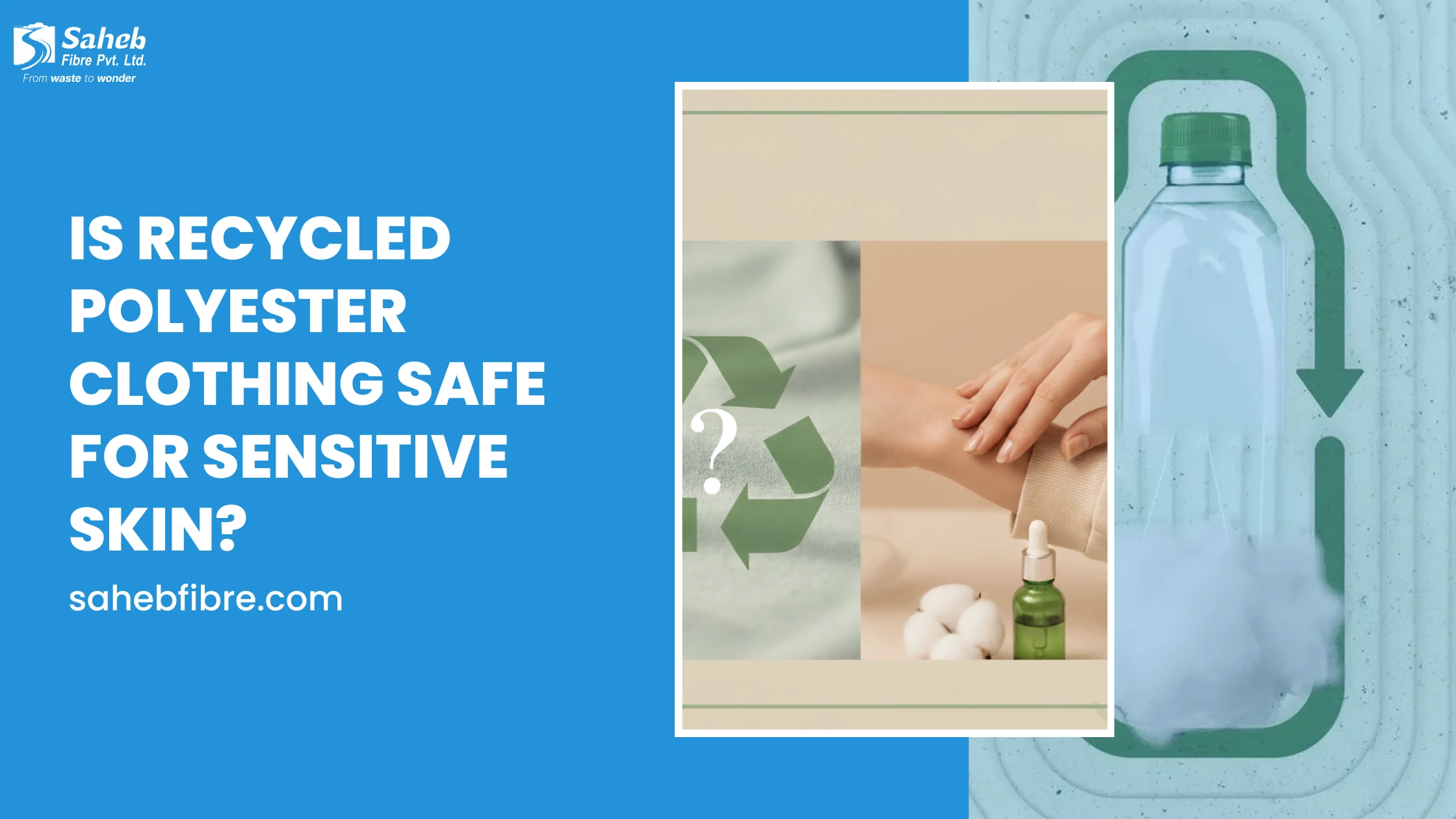
In a world where sustainability and conscious consumption are reshaping industries, recycled polyester clothing has emerged as a frontrunner in eco-friendly fashion. From global athletic brands to boutique designers, everyone is turning toward recycled polyester fabric made from post-consumer PET bottles. This shift not only reduces plastic waste but also promotes circular textile production.
However, as more people embrace eco-fashion, one question often surfaces “Is recycled polyester safe for sensitive skin?” For individuals prone to allergies, rashes, or irritation, understanding how recycled polyester fabric interacts with the skin is essential. Let’s explore the composition, potential benefits, risks, and best practices for safely enjoying sustainable style.
What Exactly Is Recycled Polyester (rPET)?
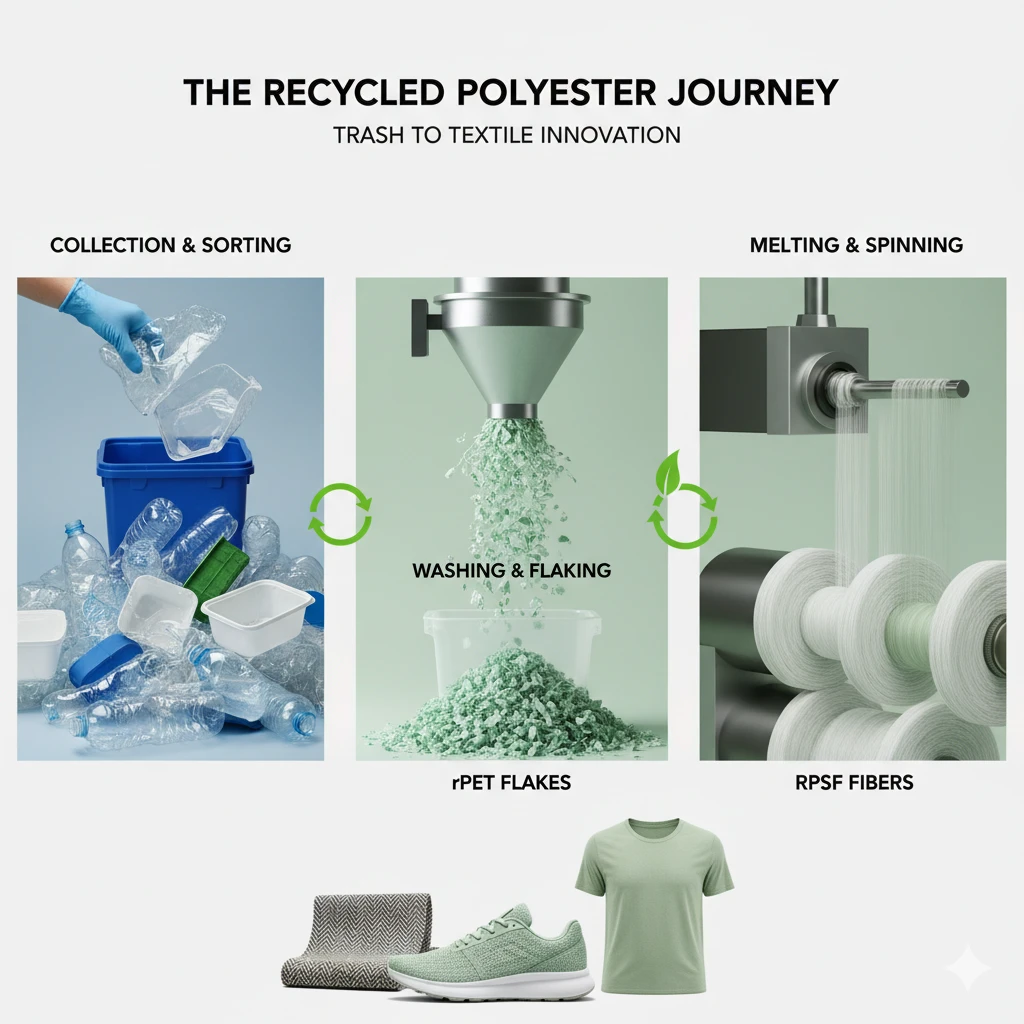
Recycled polyester, commonly known as rPET polyester, is produced through a process called pet fiber recycling. In this method, used polyester bottles, packaging, or industrial waste are collected and converted into pet flakes, rPET flakes, or green pet flakes. These flakes are then melted and spun into soft, durable fibers known as RPSF (Recycled Polyester Staple Fiber).
This eco-innovation gives discarded plastic a second life. Instead of ending up in oceans or landfills, PET bottles are transformed into yarn that’s used to make recycled polyester clothing, upholstery, and even footwear.
The result? A sustainable material that helps conserve resources, reduces carbon emissions, and supports a cleaner environment, all while retaining the strength and versatility of traditional polyester.
Why Recycled Polyester Clothing Has Gained Popularity
The fashion industry’s pivot to recycled plastic fabric is more than a trend; it’s a necessity. The textile sector accounts for millions of tons of waste each year, and recycled polyester offers an effective solution to reduce environmental harm.
1. Environmental Benefits
Recycling existing polyester bottles cuts dependency on virgin petroleum resources. Producing recycled polyester fabric consumes up to 59% less energy and emits fewer greenhouse gases. Moreover, every ton of recycled polyester saves nearly 1.5 tons of CO₂ compared to virgin alternatives.
2. Durability and Performance
Despite being made from waste, rPET polyester performs exceptionally well. It’s resistant to stretching, shrinking, and wrinkling, which makes it suitable for sportswear, uniforms, outerwear, and even fashion garments.
3. Ease of Maintenance
Recycled polyester clothing dries quickly, resists color fading, and maintains its appearance over time. It’s a low-maintenance, long-lasting fabric that meets both environmental and practical needs.
4. Cost-Effective and Versatile
With an expanding range of textures, finishes, and blends, recycled polyester fabric can mimic cotton, silk, or wool, offering sustainable alternatives for almost any clothing style.
What Triggers Fabric-Related Skin Sensitivity?
Skin sensitivity is common among individuals who experience eczema, dermatitis, or allergic reactions. The skin may become irritated due to heat, friction, moisture, or chemical residues left on fabrics.
Synthetic materials like polyester, although soft to touch, are less breathable than natural fibers. This means they can trap heat and sweat, creating a moist environment that encourages bacterial growth, potentially leading to itching, redness, or discomfort.
For people with sensitive skin, the fiber’s origin, treatment chemicals, and finishing agents can all influence whether the fabric feels comfortable or irritating.
So, Is Recycled Polyester Clothing Safe for Sensitive Skin?
The honest answer is mostly yes, but with a few precautions.
Recycled polyester itself is not toxic or inherently allergenic. However, the safety and comfort of wearing recycled polyester clothing depend largely on how the fabric is produced, dyed, and finished.
Let’s look at some crucial factors.
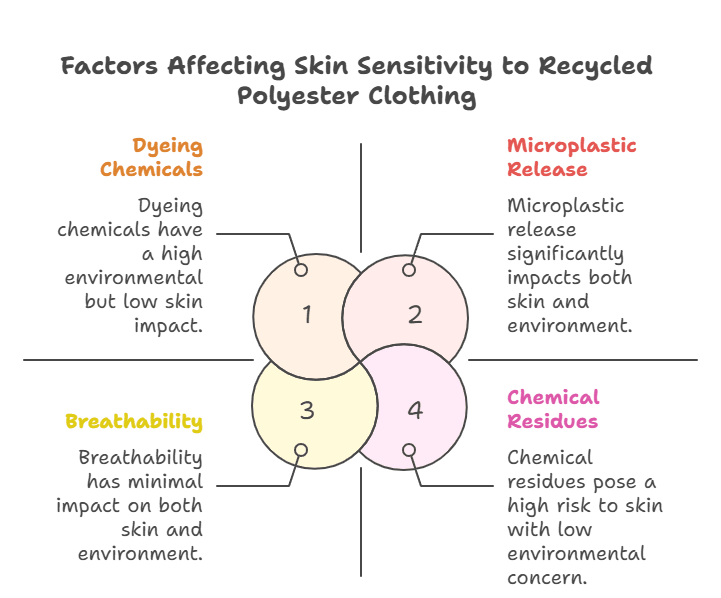
1. Chemical Residues and Processing Agents
During pet fiber recycling, pet flakes are melted and purified. While reputable manufacturers ensure rigorous cleaning, trace residues from dyes, lubricants, or antimony catalysts may remain in poorly processed fabrics.
Exposure levels are typically low and well below safety limits, but those with ultra-sensitive skin should be cautious. Certifications like Oeko-Tex® Standard 100, Global Recycled Standard (GRS), and Bluesign® ensure that the recycled polyester fabric has been tested for over 100 harmful substances.
2. Breathability and Heat Management
A common drawback of polyester recycled or not is limited breathability. When worn in hot or humid conditions, rPET polyester can trap moisture, increasing sweat accumulation and skin friction. This can aggravate conditions like eczema or folliculitis.
Modern textile innovations, however, have improved fabric ventilation. Many manufacturers now produce moisture-wicking recycled polyester fabrics designed to move sweat away from the body and dry quickly. Choosing such fabrics can greatly enhance comfort, even for sensitive skin.
3. Microplastics and Fabric Shedding
Every time synthetic garments are washed, they release microscopic fibers known as microplastics. While this primarily affects the environment, researchers are studying whether prolonged contact with microfibers might also affect human skin health.
Although no conclusive evidence exists yet, minimizing microfiber release is beneficial. Using gentle washing cycles, microfiber-catching laundry bags, and cold water washes can reduce fiber shedding.
4. Dyeing and Finishing Chemicals
Most skin irritation from synthetic fabrics doesn’t come from the fibers themselves but from chemical finishes, dyes, and resins used during production. Disperse dyes, commonly used on polyester, are known allergens and can cause contact dermatitis.
Consumers should look for light-colored or undyed recycled polyester clothing, as these typically use fewer chemical dyes and are gentler on the skin.
Virgin Polyester vs Recycled Polyester: A Comparison
| Feature | Virgin Polyester | Recycled Polyester (rPET) |
|
Raw Material |
Derived from petroleum |
Derived from post-consumer PET- bottles |
|
Energy Use |
High |
40–60% lower |
|
Carbon Emissions |
High |
Reduced significantly |
|
Strength & Durability |
Excellent |
Equivalent |
|
Chemical Exposure |
Controlled |
Controlled with certifications |
|
Skin Comfort |
May cause mild irritation |
Similar, depends on finishing |
This comparison shows that recycled polyester is not more allergenic than virgin polyester - provided it’s processed with strict quality and safety standards.
What Research and Experts Say
Several dermatological and textile studies have examined whether recycled polyester increases skin irritation risks. The consensus: no significant difference exists between virgin and recycled polyester in terms of allergenic potential.
A 2024 review on bisphenol residues in recycled textiles found trace amounts of chemicals, but well below levels considered harmful to human health. Similarly, skin experts emphasize that most textile-related reactions are due to finishes, dyes, or detergents, rather than the base fiber itself.
Thus, certified recycled polyester fabric can be considered safe for most users, including those with mild sensitivities, as long as it’s produced responsibly.
Tips to Safely Wear Recycled Polyester Clothing for Sensitive Skin
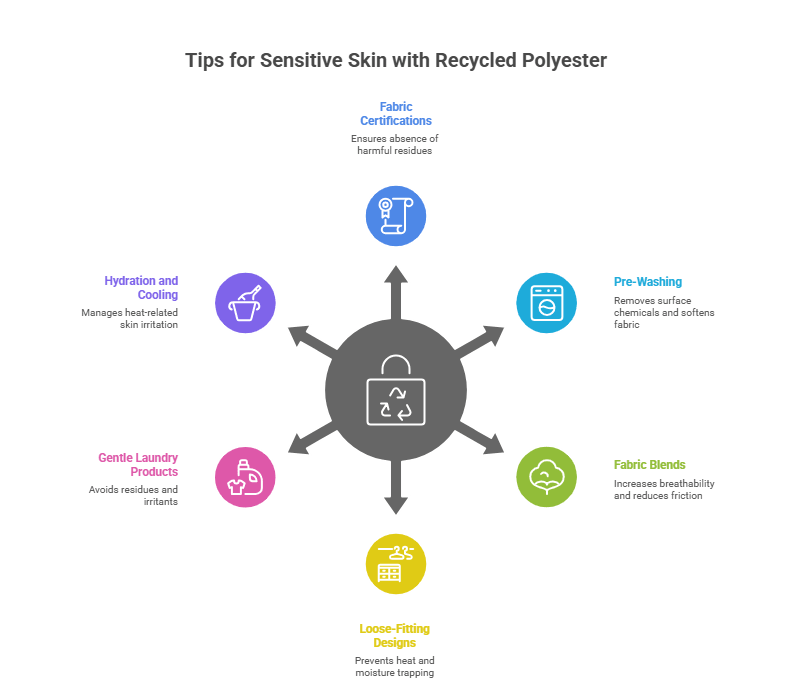
If you enjoy the sustainability benefits of recycled polyester clothing, here’s how to minimize irritation and maximize comfort:
- Check Fabric Certifications:
Choose garments labeled with Oeko-Tex®, GRS, or Bluesign®. These certifications guarantee the absence of harmful residues.
- Pre-Wash Before Use:
Always wash new clothes before wearing them. This removes surface chemicals and makes the fabric softer against the skin.
- Choose Fabric Blends:
Fabrics blended with organic cotton, bamboo, or Tencel™ increase breathability and reduce skin friction.
- Select Lightweight and Loose-Fitting Designs:
Avoid tight-fitting recycled polyester garments that can trap heat and moisture.
- Use Gentle Laundry Products:
Wash your clothes with fragrance-free, hypoallergenic detergents and avoid fabric softeners that can leave residues.
- Stay Hydrated and Cool:
Skin irritation worsens in heat; wear recycled polyester fabric in moderate climates or for active use where moisture-wicking is beneficial.
About Sahbe Fibre – Setting Standards in Recycled Polyester Innovation
Sahbe Fibre is a trusted name in the field of Recycled Polyester Staple Fiber (RPSF) manufacturing and supply. The company transforms PET bottle flakes into premium-quality recycled polyester fibers, using eco-efficient technologies that minimize water and energy consumption.
With a commitment to environmental safety and product excellence, Sahbe Fibre ensures that every batch of recycled polyester fabric meets stringent quality and hygiene standards. Their fibers are widely used in clothing, furnishings, and industrial applications — helping brands embrace sustainability without compromising on performance or skin safety.
Through continuous innovation in pet fiber recycling and sustainable material engineering, Sahbe Fibre continues to lead the movement toward a cleaner, greener textile future.
FAQs
1. Can Recycled Polyester Cause Skin Irritation?
Yes, but it’s uncommon. Mild irritation may occur in people with extremely sensitive skin due to trapped sweat or dye residues. Choosing certified, breathable, and pre-washed recycled polyester clothing can significantly reduce the risk.
2. Is Recycled Polyester Hypoallergenic?
Not completely. While the polymer itself doesn’t contain allergens, disperse dyes or finishing chemicals might trigger irritation in some individuals. If you have skin allergies, opt for organic or undyed recycled fabrics.
3. Does Recycled Polyester Contain Harmful Chemicals?
When produced responsibly, recycled polyester fabric undergoes thorough cleaning and filtration. Certified products made from pet bottle flakes or RPSF are tested for safety, ensuring no harmful chemical residues remain.
4. Is Recycled Polyester Better for the Environment?
Absolutely. It diverts millions of plastic bottles from landfills and oceans, conserves energy, and reduces carbon emissions, all while delivering durable, long-lasting clothing.
The Final Verdict: Sustainable, But Be Skin Smart
In conclusion, recycled polyester clothing is a sustainable innovation that offers durability, affordability, and environmental responsibility. For most people, it’s completely safe, provided it’s made using certified, high-quality recycled polyester fabric.
However, if you have ultra-sensitive skin, pay attention to fabric blends, finishes, and certifications before purchasing. The right choice can ensure both comfort and sustainability go hand in hand.
- Beta
- Beta
- Beta
- Beta
- Beta
- Beta
- Beta
- Beta
- Beta
- Beta
- Beta
